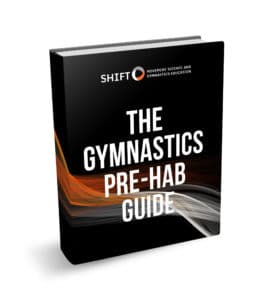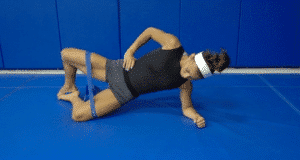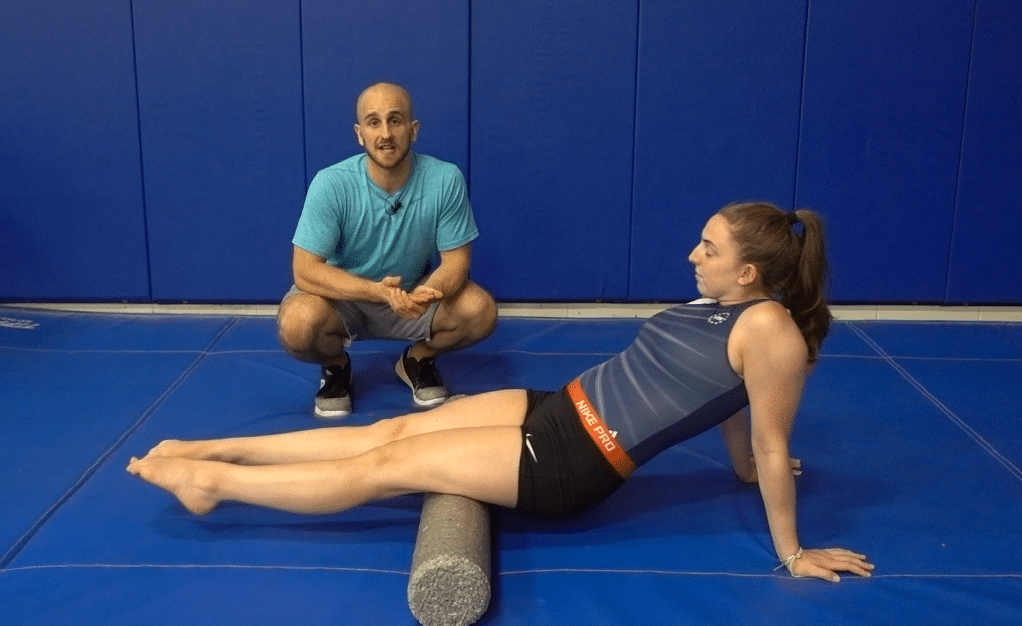The “Why, What, and How” for Soft Tissue Care in Gymnasts
The concept of soft tissue care has absolutely blown up in the last few years for all sports, but even more so gymnastics. Foam rolling, lacrosse ball work, stick massages, and other tools are being seen all across practice and competition floors during warm-ups.
Given how popular and how fast it has been showing up, it can be really overwhelming for coaches or parents who may not have a background in the medical world. People go crazy with polar opposites on this topic saying foam rolling is either a miracle or completely useless. Spoiler alert, it’s probably somewhere in the middle. I’m clearly more on the pro side because I’m writing an article about it. But before you light the comments section on fire, I don’t want to dive into the mega nerdy side of manual therapy and soft tissue care. If you want to hear my thoughts on that, check out these posts here and here from last year.
In this very short blog post and accompanying video, I want to give a “quick hits” version of the why, what, and how for soft tissue care in gymnasts.
Table of Contents
“Why” of Soft Tissue Care
Long story short, various forms of soft tissue work have some good support in the research to help people “feel better and move better” as my mentor Mike Reinold says. There is research to support light foam rolling can help reduce the amount of perceived soreness someone has, increase blood flow to muscles, increase the amount of water hydration to the muscle, assist recvoery, and maybe have positive effects on flexibility.
Based on my experiences reading research and doing soft tissue care every day, we are likely not breaking up scar tissue or fascial adhesions, but more promoting relaxation through desensitization or competitive stimulus and increased blood flow to muscles. (more research on that here, here, here, and here) There is always new emerging research that can prove both sides of this argument, but all of my experiences suggest there are minimal side effects when done properly, and that it may help athletes as one piece to their warm-up routine. (See more research here, here, here, here, and here)
What of Soft Tissue Care
This is usually the most common question I get. What type of foam roller should I get? Should it have bumpy ridges or not? Lacrosse, Tennis, or golf balls? What about sticks? I will be 100% honest here. Over the last 5 years, I truly have used the most basic types of soft tissue tools, with great results. I strongly feel that it is not the tool you use, but more so the need to base it off a good screen or assessment, and the need to do it consistently.
This being said, I think the most basic foam rollers (find it on Amazon here) work just fine for our entire team. I will also be honest in saying that I actually asked our girls team to just bring in tennis balls, golf balls, and lacrosse balls laying around their house for us to put in a giant bucket and use. Like all gyms, we run on a budge. I do understand people may want some new, clean, ones to use. So lacrosse balls are usually my go-to because they stick to walls or ground a lot easier, and can just go in a bucket or drawer to keep the gym tidy. You may also want to buy a bundle for cheap in the gym (you can find those on Amazon here.) I will say that there is a need to use more portable tools, or more specific “sticks” to get certain areas. For those goals, I usually point people to this awesome collapsable roller Tumble Trak sells that can easily go in a travel bag, or this nifty mini roller stick from Theraband that collapses down, and can be taken on the road as well.
How of Soft Tissue Care
This is usually the most overwhelming piece to soft tissue care. I’ll sum things up again – soft tissue care should not hurt, it should not take 25 minutes, and it should not replace a full warm up. I’ll be the first person to admit that when we introduced soft tissue care as a regular part to our gym, many of the girls simply sat on the rollers for 5 minutes while they talked about their most recent Instagram drama. This is not what we are looking for. Based on looking at the research and giving a lot of people soft tissue care in their warm-ups, here’s what I recommend to people – 30-60 seconds of foam roller per muscle group, done at a 3-4/10 discomfort, prior to a full dynamic warm-up, every day. (find more research here, here, and here,).
Based on all of this, below is a quick 3-minute video I filmed to wrap these concepts together and show the go-to lower body soft tissue care I give gymnasts every day. Also, if you are looking for a comprehensive gymnastics specific soft tissue care and pre-hab guide, I released a free Gymnastics Pre-Hab this week that had over 1000 downloads in the first few days. I’ll leave the email sign-up form for exclusive updates and bonus content here, then hope the video below helps!
Download SHIFT's Free Gymnastics Pre-Hab Guide


Daily soft tissue and activation exercises
Specific 2x/week Circuits for Male and Female Gymnasts
Descriptions, Exercise Videos, and Downloadable Checklists

Have a great weekend,
– Dave
Dave Tilley DPT, SCS, CSCS
CEO/Founder of SHIFT Movement Science




